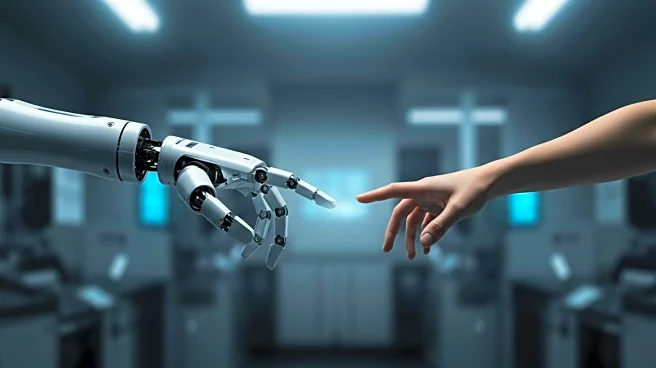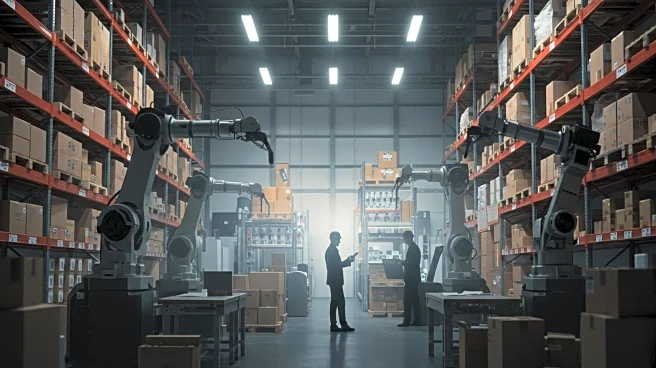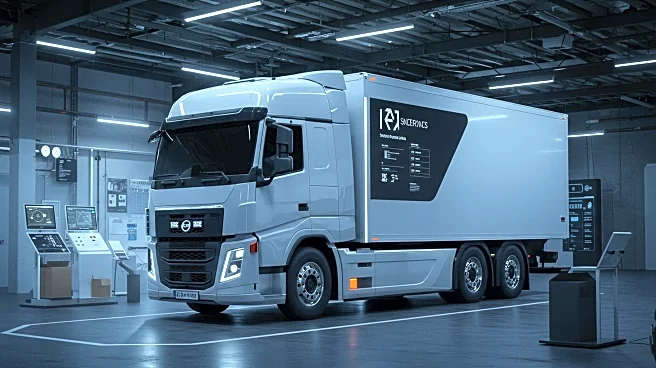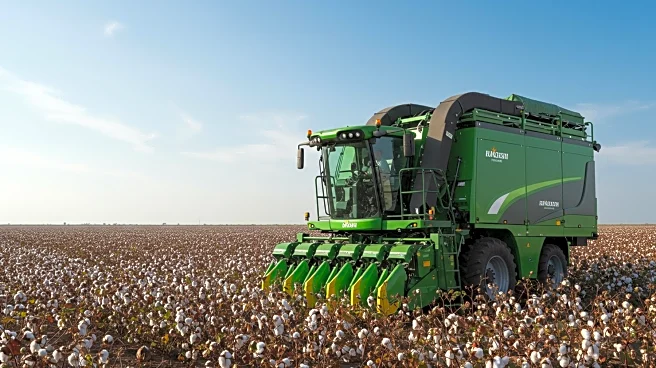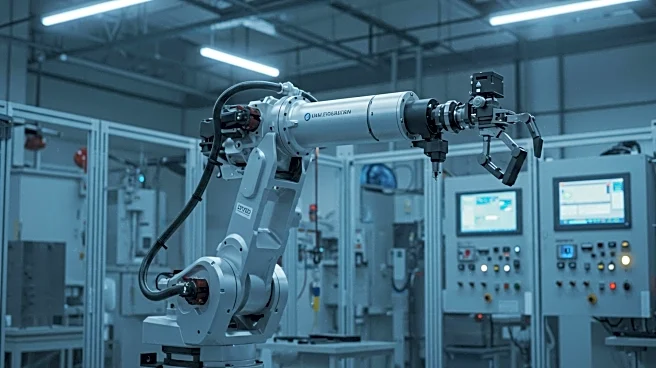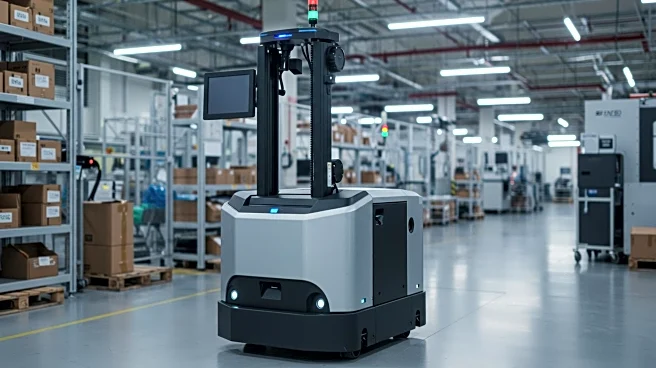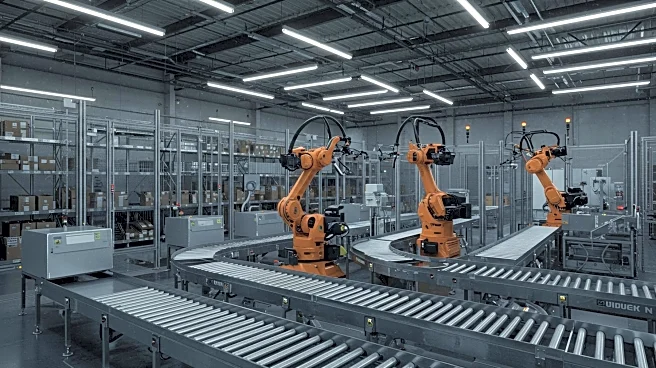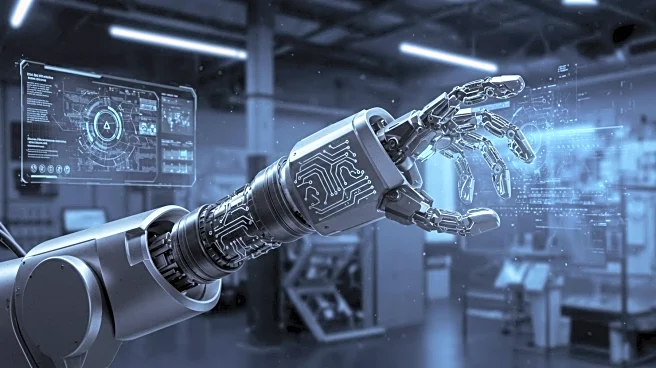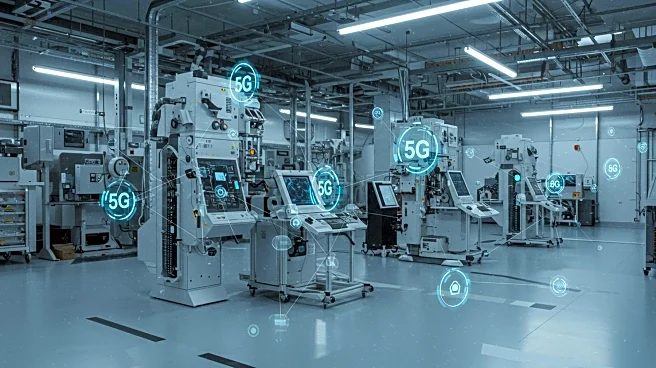What is the story about?
What's Happening?
The material handling industry is witnessing a shift towards a hybrid workforce, combining human labor with collaborative robots (cobots). This approach addresses the inefficiencies and injury risks associated with manual material handling, while overcoming the inflexibility and safety concerns of conventional automation. Cobots enhance efficiency and safety by working alongside humans, reducing picking time and improving situational awareness. This trend is gaining traction as businesses seek to balance human adaptability with robotic precision.
Why It's Important?
The integration of cobots in material handling represents a significant advancement in industrial automation, potentially transforming supply chain operations. By leveraging both human and robotic strengths, companies can improve productivity, reduce injury rates, and address labor shortages. This hybrid approach may lead to cost savings and increased operational flexibility, offering a competitive edge in the logistics sector. As cobots become more prevalent, the industry could see a shift towards more collaborative and efficient workflows.
What's Next?
As the market for cobots matures, businesses will likely refine their strategies for balancing tasks between humans and robots, optimizing efficiency and safety. The adoption of cobots may drive further innovation in material handling technology, encouraging more companies to explore hybrid solutions. This trend could lead to broader changes in supply chain management, influencing industry standards and practices.
AI Generated Content
Do you find this article useful?
